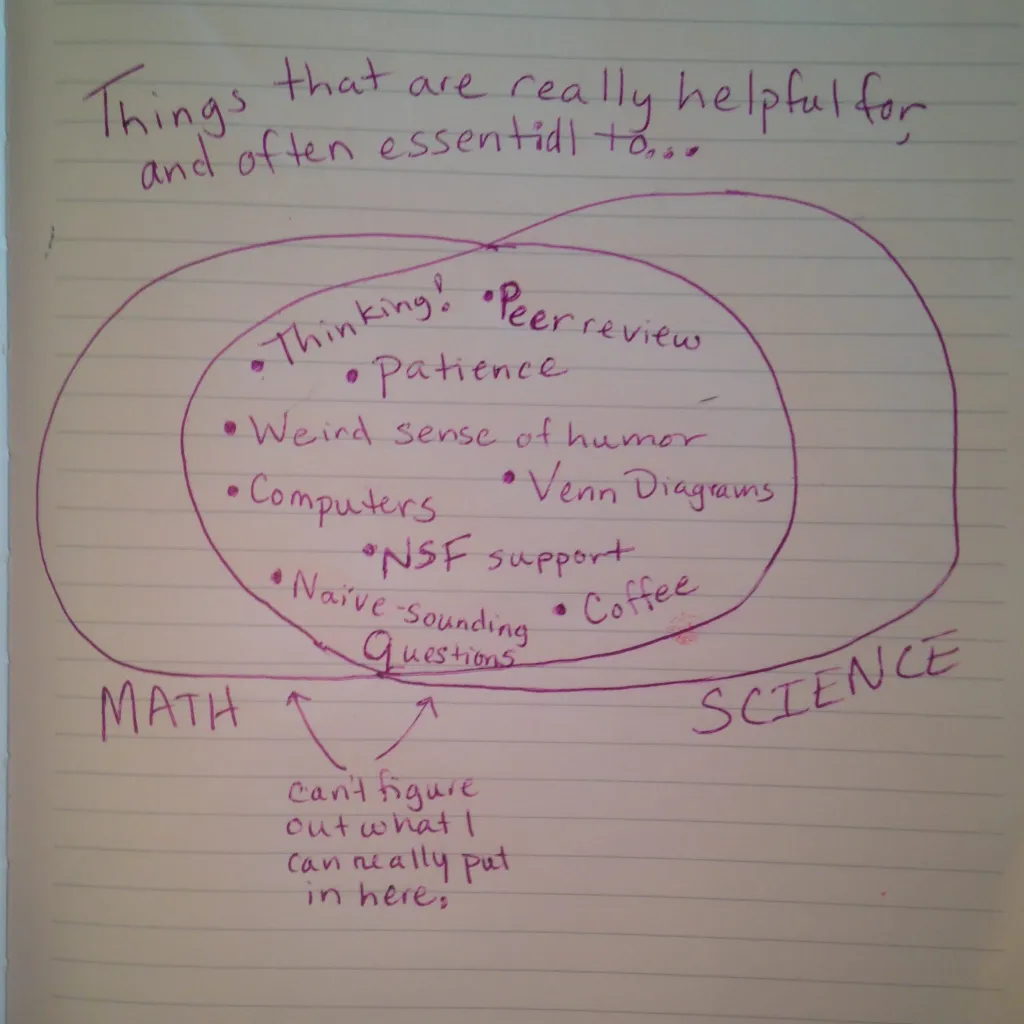1.4 Interdisciplinary ideas
Sciences
One of the primary aims of the sciences course is to impart a scientific approach. This involves a scientific way of thinking when dealing with problems. Pupils must learn the experimental approach, which places them in the position of a scientific researcher and enables them to construct their knowledge independently. The scientific approach involves gathering, structuring and interpreting information.1 More specifically, the following skills are targeted:
- Formulate well-founded hypotheses based on the context, using examples.
- Make targeted observations, present and evaluate the results, and draw conclusions.
- Recognise simple cause-and-effect relationships and draw logical conclusions.
- Diagrammatic representation and interpretation of the models presented.2
The mathematical approach is not the same as that used in the natural sciences. Scientific theories are supported by repeated experiments, but are never proved, whereas we can actually prove things in mathematics. However, there is also a great similarity between the two. Mathematician Joseph Silverman explains in (Silverman, 2012) that in number theory, we collect data by calculating a large number of examples. Then we look for a model, make a hypothesis and test it with more data (more examples). If the hypothesis does not match the new data, we revise it. After a few iterations, when the new data matches our hypothesis, we finally try to prove it. This follows exactly the same pattern as in the natural sciences.

Source: Math is Like Science, Only with Proof. Math. AMS Blogs. https://blogs.ams.org/phdplus/2017/04/17/math-is-like-science-only-proof-y/
It is this aspect of the natural sciences that is emphasised in this module. Pupils learn to carry out experiments (in the mathematical context, this means doing several examples), to recognise patterns and models in order to formulate a hypothesis and finally to prove or disprove it. In addition, the use of algebraic tools contributes to the implementation of the scientific approach, complementing observation, manipulation and experimentation (Éduscol, 2016).
Philosophy, moral education
This module shows students how to demonstrate a fact in mathematics. The idea is that, in mathematics, a conjecture is true if and only if it is proved. Even if it has been verified on a billion examples, it remains a conjecture and we cannot be sure that it is true. This idea fits in with the following more general and philosophical question:
What does it mean to say that something is true?
In a slightly more restrictive setting, we can ask when something is true in science. This last idea is present in the “Vie et Société” syllabus for secondary 6 in the “Big Questions” section under the theme “Religion and Natural Sciences – What can I know?3
It is therefore possible to discuss these questions during the course “Vie et Société” or any other philosophical course, at the same time as teaching this module during the mathematics course.
The Lumni philosophy sheet (in French) below discusses the essential distinction between example and proof, a fundamental conceptual nuance. This reflection fits perfectly into this module, which mathematically demonstrates the differences between three key epistemological concepts: proof (rigorous and universal demonstration), example (particular illustrative case) and counterexample (particular case that invalidates a general proposition).
Thinking about mathematics: a philosophical approach
The web documentary “Paroles de déchiffreurs” features fourteen interviews with researchers working in different areas of mathematics (more information under 1.5 More on this Topic).
The content of this lesson lends itself to a rich interdisciplinary approach. The web page associated with the web documentary contains videos of the interviews filmed, as well as the texts of the interviews. The class will explore these varied texts, ranging from biographies of mathematicians to interviews with contemporary researchers, providing a basis for discussion that transcends the traditional boundaries between disciplines. These resources will make it possible to lead stimulating debates touching on mathematics as well as philosophy, physics, astronomy and even the history of science and the arts. This multi-dimensional approach will help to understand how mathematics fits into the wider context of human thought and culture.
Références
1. Éduscol. (2016). Utiliser le calcul littéral. https://eduscol.education.fr/document/17263/download
2. Silverman, J. (2012). A Friendly Introduction to Number Theory. Chapter 1. Fourth Edition. Pearson Education, Inc. ix + 409 + (56 online) pages. https://www.math.brown.edu/johsilve/frint.html
1Programme de Sciences Naturelles 7C et 6C.
2idem
3Rahmenlehrplan für das Fach Leben und Gesellschaft / Vie et Société. https://vieso.script.lu/sites/default/files/2020-12/Rahmenlehrplan%20VIESO1_0.pdf

